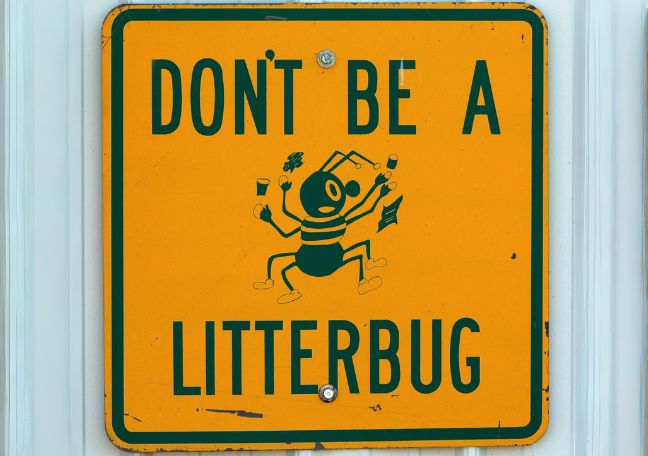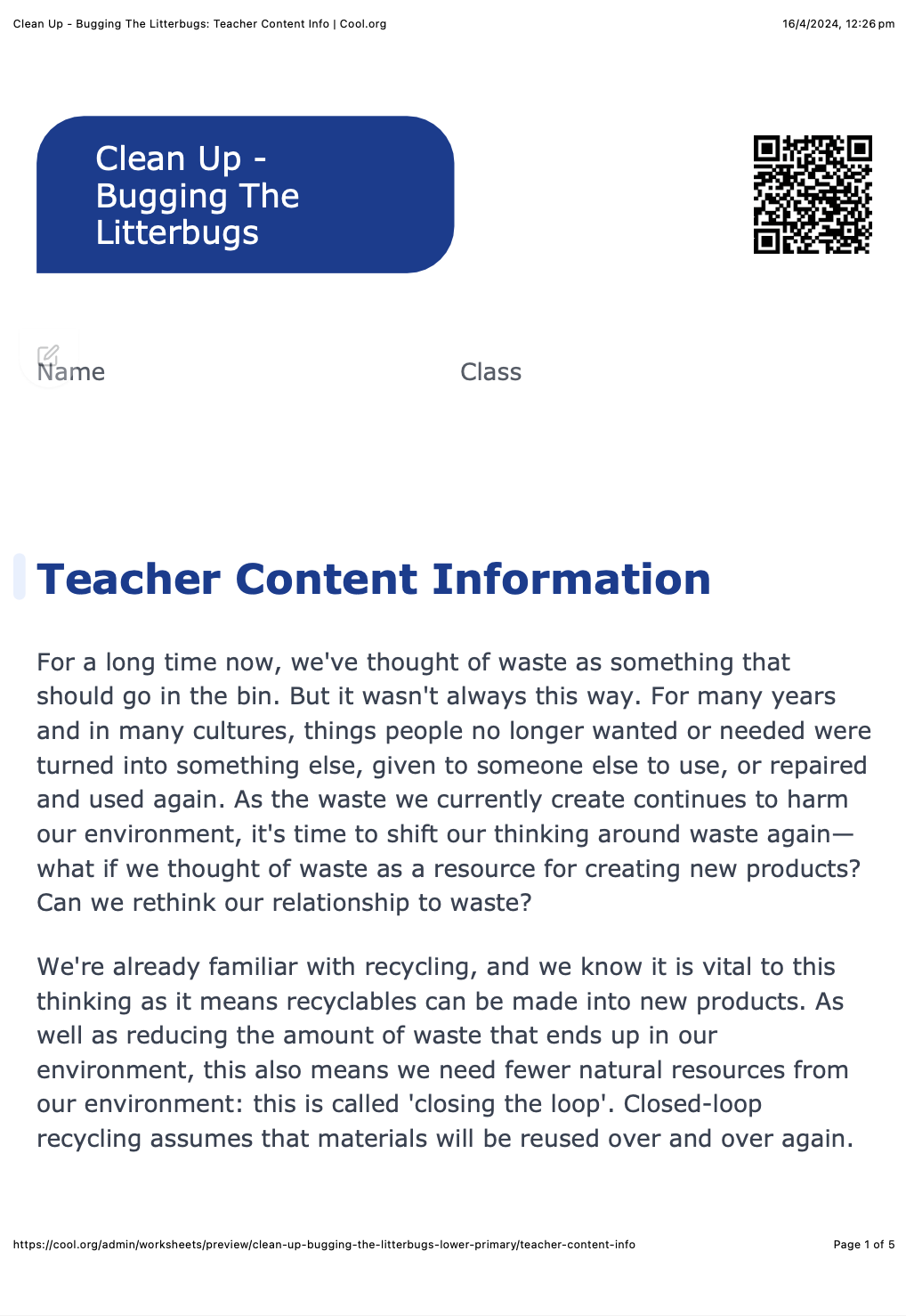Lesson summary
Students create a litter campaign. They explore why litter is bad for our environment and identify local sites where they often observe litter. Students create a tagline to convince the community not to litter.
Learning intentions:
Students will...
- understand how litter can negatively impact our environment
- identify a local litter hot spot, and create a campaign to address the litter at that site.
Success criteria:
Students can...
- give examples of strategies for preventing waste from getting into our environment
- develop and communicate a campaign to raise awareness around a local litter hot spot.
Lesson guides and printables
Lesson details
Skills
This lesson is designed to build students’ competencies in the following skills:
- communication
- community engagement
- critical thinking
- collaboration
Curriculum mapping
Australian Curriculum (v9.0) content descriptions:
Humanities and Social Sciences
Foundation:
- The features of familiar places they belong to, why some places are special and how places can be looked after (AC9HSFK03).
- Share a perspective on information, such as stories about significant events and special places (AC9HSFS03).
Year 1:
- The natural, managed and constructed features of local places, and their location (AC9HS1K03).
- Draw conclusions and make proposals (AC9HS1S05).
Year 2:
- discuss perspectives related to objects, people, places and events (AC9HS2S04).
- Draw conclusions and make proposals (AC9HS2S05).
Year 3:
- who makes rules, why rules are important in the school and/or the local community, and the consequences of rules not being followed (AC9HS3K06).
- Propose actions or responses to an issue or challenge that consider possible effects of actions (AC9HS3S06)
Syllabus outcomes: GEe-1, GEe-2, GE1-1, GE1-3, GE2-4,
General capabilities: Critical and Creative Thinking
Cross-curriculum priority: Sustainability
Relevant parts of HASS achievement standards:
- Foundation: Students can recognise the features of familiar places, why some places are special to people and the ways they can care for them.
- Year 1: They identify the location and nature of the natural, managed and constructed features of local places, the ways places change, and how they can be cared for by people.
- Year 2: Students can interpret information and data and identify and discuss perspectives. They can also use interpretations to draw conclusions and make proposals.
- Year 3: Students describe the importance of rules and people’s contributions to communities and can propose actions or responses to an issue or challenge.
This lesson is part of the wider unit of work Clean Up Australia -Primary Curriculum.
Level of teacher scaffolding: Medium - lead class discussions and oversee campaign creation.
Time required: 60+ mins.
UN Sustainable Development Goals
UN SDG 11: Make cities and human settlements inclusive, safe, resilient and sustainable
- Target 11.6: By 2030, reduce the adverse per capita environmental impact of cities, including by paying special attention to air quality and municipal and other waste management
Resources required
- Device capable of displaying audiovisual material
- Materials for the campaign (e.g. poster-making materials, a device with a camera for making a clip)
Additional info
This lesson was created in partnership with Clean Up Australia and its Education Partner, Unilever Australia - maker of household staples including Dove, Rexona, TRESemmé, Omo, Continental, Hellmann’s and Streets ice creams. Unilever and Clean Up Australia joined forces in 2020 to help inspire and empower Australians to clean up, fix up and conserve our environment. To learn more about the action Unilever is taking to improve the health of the planet, visit Sustainability - Planet & Society | Unilever.
Following this lesson plan is an ideal way for your school to take part in Schools Clean Up Day or a Clean Up on any day of the year. You’ll be joining thousands of amazing teachers in making a difference and creating positive environmental change.



Welcome back!
Don't have an account yet?
Log in with:
By signing up to Cool.org you consent and agree to Cool's privacy policy to
store, manage and process your personal information. To read more, please see
our privacy policy here(Opens in new tab).
Create your free Cool.org account.
Many of our resources are free, with an option to upgrade to Cool+ for premium content.
Already have an account?
Sign up with:
By signing up to Cool.org you consent and agree to Cool's privacy policy to
store, manage and process your personal information. To read more, please see
our privacy policy here(Opens in new tab).